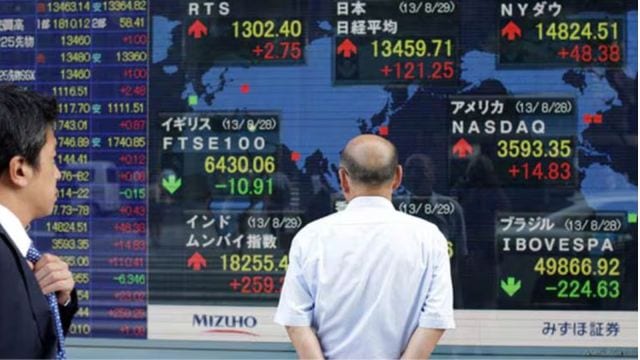 Asian markets plummet as Trump announces reciprocal tariffs. (Representational)
Asian markets plummet as Trump announces reciprocal tariffs. (Representational)Donald Trump Tariffs List Highlights: Wall Street fell sharply for a second straight session, pushing the Nasdaq toward a bear market after China imposed fresh tariffs on all US goods in response to Trump’s sweeping levies. The Dow Jones Industrial Average fell over 1,200 points (3%), following Thursday’s 1,679-point drop, while the S&P 500 slid 3.6%. The Nasdaq Composite tumbled 3.8%, extending Thursday’s 6% decline and deepening market losses. As a result, the MSCI All Country World Index, which tracks 2,645 companies, fell over 1%, with losses now reaching 10% since February’s record high, the index has officially entered correction territory, a threshold traditionally classed as a ‘correction’ by market analysts.
India slapped with a 27% tariff: On Wednesday, after market hours, Trump announced sweeping tariffs on major trading partners, including India, calling April 2 “Liberation Day” and declaring it “one of the most important days in American history.” He announced “discounted reciprocal tariffs” of 27 per cent on India, now revised to 26 per cent, according to a White House document. This number is significantly lower than those imposed on several Asian peers, including 36 per cent on Thailand and 32 per cent on Indonesia. These tariffs come in addition to a 10 per cent base duty on all US imports.
How has the US calculated reciprocal tariffs? Reciprocal tariffs are calculated as the tariff rate necessary to balance bilateral trade deficits between the US and each of our trading partners. Essentially, the US aims to raise tariffs to a level where trade balances out, it is not as concerned with the actual level of tariffs imposed against it but with using tariffs to wipe out its trade deficit. Several global leaders have condemned the move, vowing to retaliate with countermeasures against the Trump administration.
